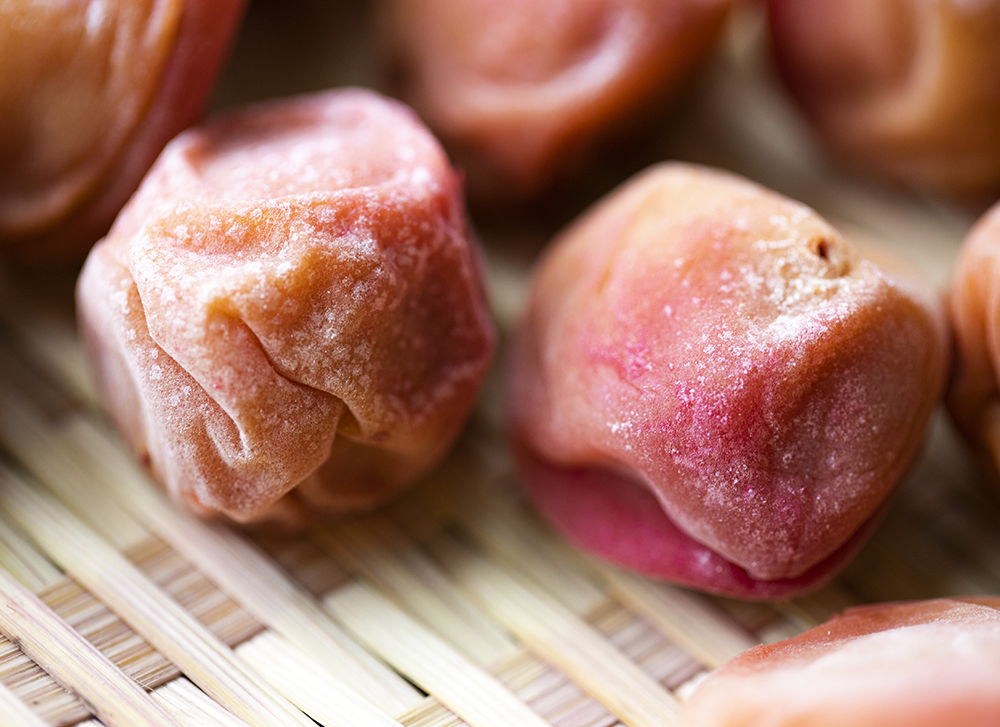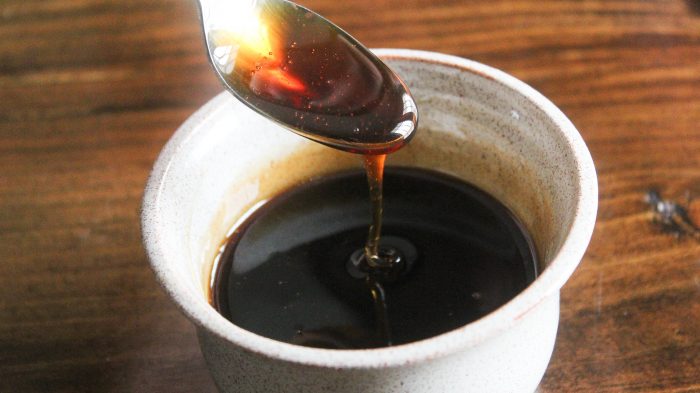U IS FOR UMEBOSHI
By:
March 14, 2024

An installment in CONDIMENT ABECEDARIUM, an apophenic food-history series from HILOBROW friend Tom Nealon, author of the seminal book Food Fights and Culture Wars: A Secret History of Taste (2016 UK; 2017 US); and also — here at HILOBROW — the popular series STUFFED (2014–2020) and DE CONDIMENTIS (2010–2012).
CONDIMENT ABECEDARIUM: SERIES INTRODUCTION | AIOLI / ANCHOVIES | BANANA KETCHUP / BALSAMIC VINEGAR | CHIMICHURRI / CAMELINE SAUCE | DELAL / DIP | ENCURTIDO / EXTRACT OF MEAT | FURIKAKE / FINA’DENNE’ | GREEN CHILE / GARUM | HOT HONEY / HORSERADISH | INAMONA / ICE | JALAPEÑO / JIMMIES | KECAP MANIS / KIMCHI | LJUTENICA / LEMON | MONKEY GLAND SAUCE / MURRI | NƯỚC CHẤM / NUTELLA | OLIVE OIL / OXYGALA | PIKLIZ / PYLSUSINNEP SAUCE | QIZHA / QUESO | RED-EYE GRAVY / RANCH DRESSING | SAMBAL / SAUERKRAUT | TZATZIKI / TARTAR SAUCE | UMEBOSHI / UNAGI SAUCE | VEGEMITE / VERJUS | WHITE GRAVY / WOW-WOW SAUCE | XO SAUCE / XNIPEK | YOGHURT / YEMA | ZHOUG / ZA’ATAR | GOOD-BYE TO ALL TZAT(ZIKI).

Umeboshi is a pickled fruit that is used an an ingredient, condiment, and weird snack in Japanese cuisine. Often referred to as a salted sour plum, it’s more like an apricot. The salty/sour flavor of these little suckers is quite extreme and they are typically used in small quantities as an accompaniment to rice balls or onigiri.
Due to the extreme nature of their flavor, a certain amount of mythology has built up around umeboshi’s properties as energizer, anti-bacterial, digestif, and general health improver — some of which is almost certainly true.
Because the flavor is pleasant but a bit overpowering, they are often soaked before eating. Instead of doing this, which seems like a waste of the properties that we value umeboshi for, I prefer to pair them with sweet and hot flavors to really square off the experience.
Adding umami is even better. Just a little hot honey added to the umeboshi and draped on top of onigiri (preferably with not too much rice to dilute the flavors) will give a really nice jolt to your taste buds.

You might know unagi sauce as the pleasantly sweet sauce that is customarily served on eel, but you can spread it around on a variety of foods to good effect. Made from sake, mirin, sugar, and soy sauce that has been cooked down, it has a sweet flavor with some depth (thanks to the wine and soy) that works well with chicken and vegetables as well as eel.
Eel are delicious and misunderstood creatures. Full of flavor but devoid of visible sex organs they have been a target of speculation for millenia.
- Aristotle believed that they spontaneously generated from mud.
- Freud dissected 400 of them trying to find their gonads.
- St. Hildegard of Bingen (1098-1179) was sure that they existed in male and female forms and were just shy (far and away the best pre-20th century guess).
In medieval England, eels were used as currency — by the end of the 11th century around a half a million eels were being used annually to pay for rent, beer soup, and sketchy papal indulgences.
Then someone invented unagi sauce and we ate them all.
TOM NEALON at HILOBROW: CONDIMENT ABECEDARIUM series | STUFFED series | DE CONDIMENTIS series | SALSA MAHONESA AND THE SEVEN YEARS WAR | & much more. You can find Tom’s book Food Fights & Culture Wars here.
